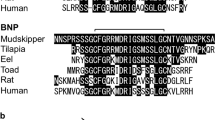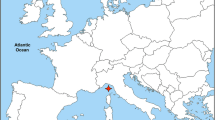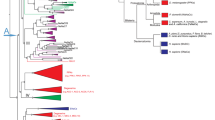Abstract
ONE marine lizard and several marine turtles possess salt glands capable of secreting highly concentrated solutions of sodium chloride1. The salt gland appears to be of adaptive advantage to reptiles exposed to electrolyte loads, because the kidney is unable to excrete urine hyperosmotic to the blood. A sea snake (Laticauda semifasciata) follows the general pattern of ionic regulation found in marine turtles and a marine lizard2. The work reported here was designed to identify the salt glands of Laticauda semifasciata and compare it with the homologous gland of another sea snake, Pelamis platurus. Laticauda excretes a relatively dilute urine (7–148 mmolar sodium) from the kidney and a concentrated sodium chloride solution (380–625 mmolar) orally2. The rate of excretion of extrarenal sodium chloride increases to as much as 72 μmoles/ 100 g/h after injection of a sodium chloride or sucrose load2. This response must be due to a salt gland. In all lizards the salt gland is the nasal gland; secretions pass from the nasal passage out through the external nares1,3,4. In turtles, salt gland secretion elaborated by the Harderian gland is discharged under the eyelid1. Crocodiles may have a similar route of extrarenal electrolyte excretion2.
This is a preview of subscription content, access via your institution
Access options
Subscribe to this journal
Receive 51 print issues and online access
$199.00 per year
only $3.90 per issue
Buy this article
- Purchase on Springer Link
- Instant access to full article PDF
Prices may be subject to local taxes which are calculated during checkout
Similar content being viewed by others
References
Schmidt-Nielsen, K., and Fänge, R., Nature, 182, 783 (1958).
Dunson, W. A., and Taub, A. M., Amer. J. Physiol., 213 (in the press).
Norris, K. S., and Dawson, W. B., Copeia, 638 (1964).
Templeton, J. R., Copeia, 136 (1967).
Smith, M., Monograph of the Sea-snakes (Hydrophiidae) (Wheldon and Wesley, London, 1926).
Dunson, W. A., and Taub, A. M., Amer. Zool., 6, 507 (1966).
Taub, A. M., and Dunson, W. A., Amer. Zool., 6, 565 (1966).
Taub, A. M., J. Morphol., 118, 529 (1966).
Haas, G., Zool. Jahrb. Abt. Anat., 52, 347 (1930).
Haas, G., Zool. Jahrb. Abt. Anat., 53, 127 (1931).
Katheriner, L., Bull. Soc. Fribourg Sci. Nat., 7, 186 (1899).
Katheriner, L., Zool. Jahrb. Abt. Syst., 13, 415 (1900).
Farhenholz, C., in Handbuch der vergleichenden Anatomie der Wirbeltiere, 3, 147 (edit. by Bolk, L., Göppert, E., Kallius., E., and Lubosch, W.) (Urban and Schwarzenburg, Berlin, 1937).
Author information
Authors and Affiliations
Rights and permissions
About this article
Cite this article
TAUB, A., DUNSON, W. The Salt Gland in a Sea Snake (Laticauda). Nature 215, 995–996 (1967). https://doi.org/10.1038/215995a0
Received:
Issue Date:
DOI: https://doi.org/10.1038/215995a0
Comments
By submitting a comment you agree to abide by our Terms and Community Guidelines. If you find something abusive or that does not comply with our terms or guidelines please flag it as inappropriate.



